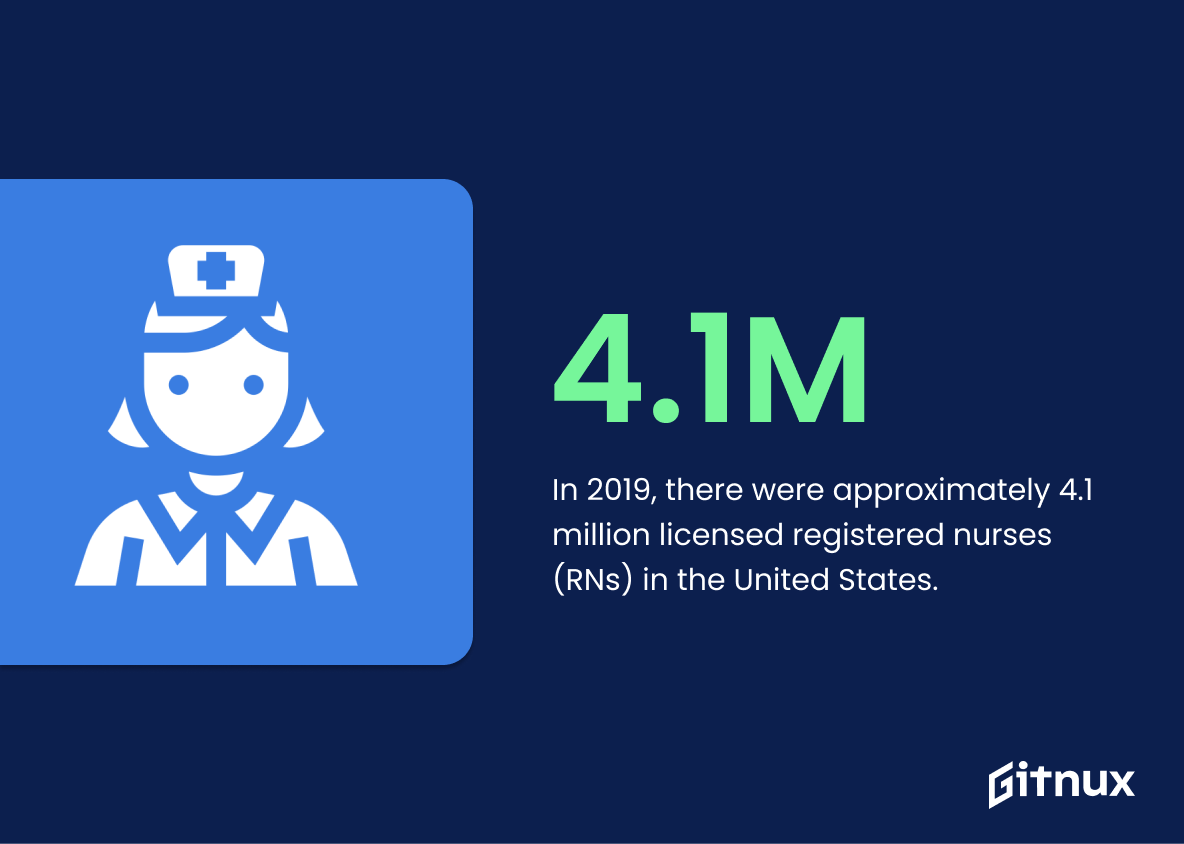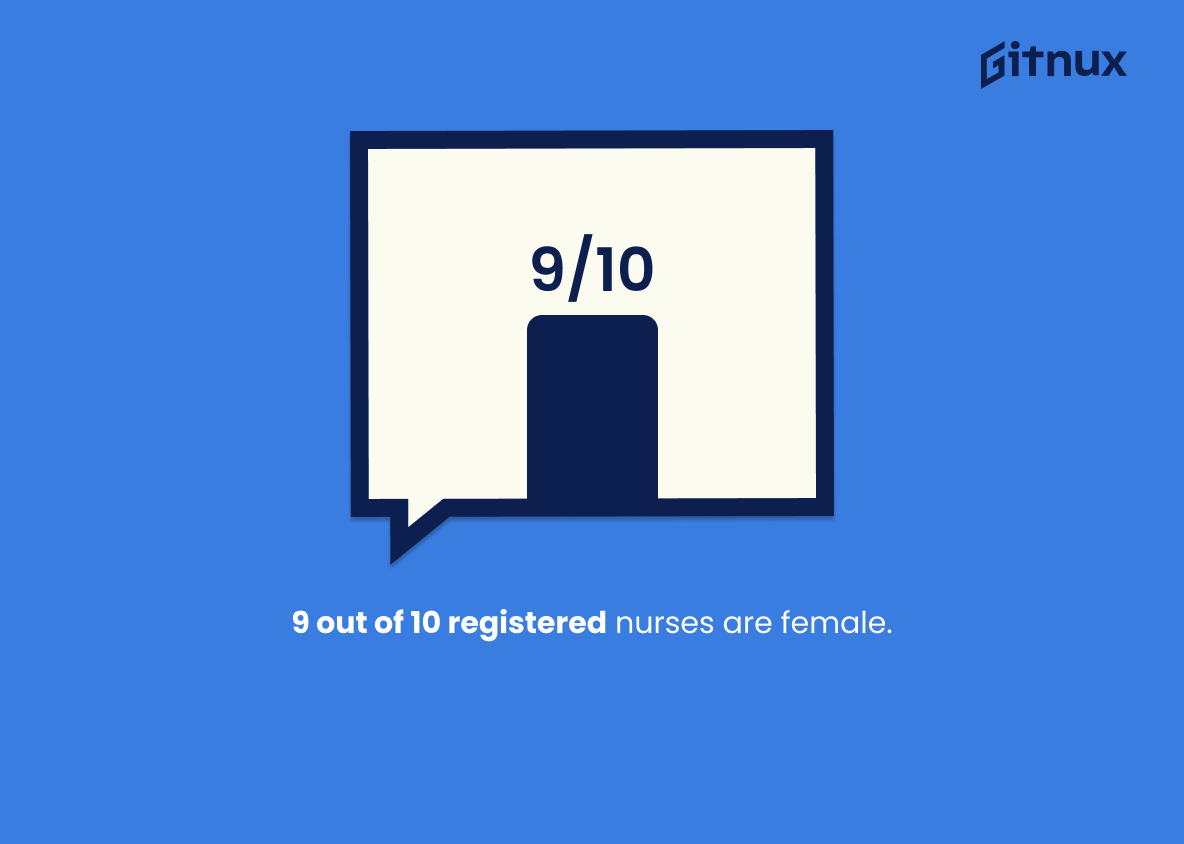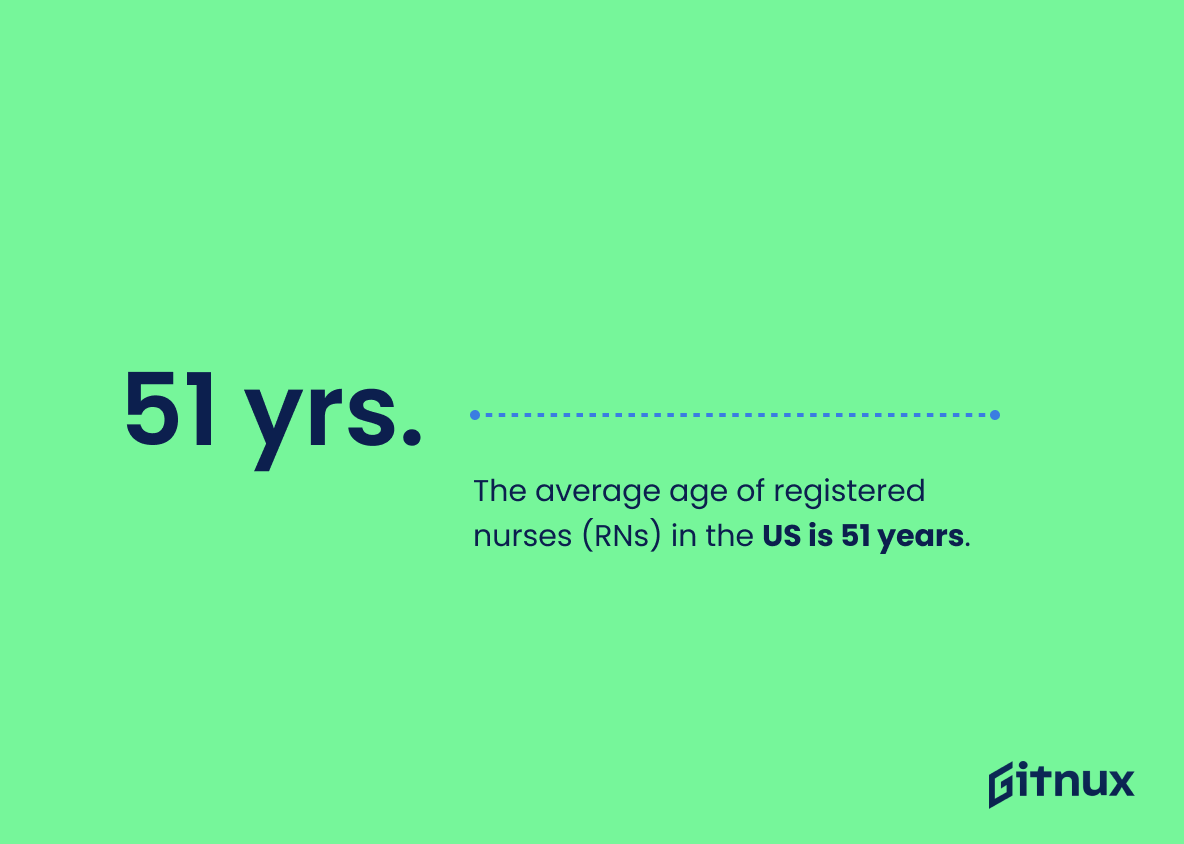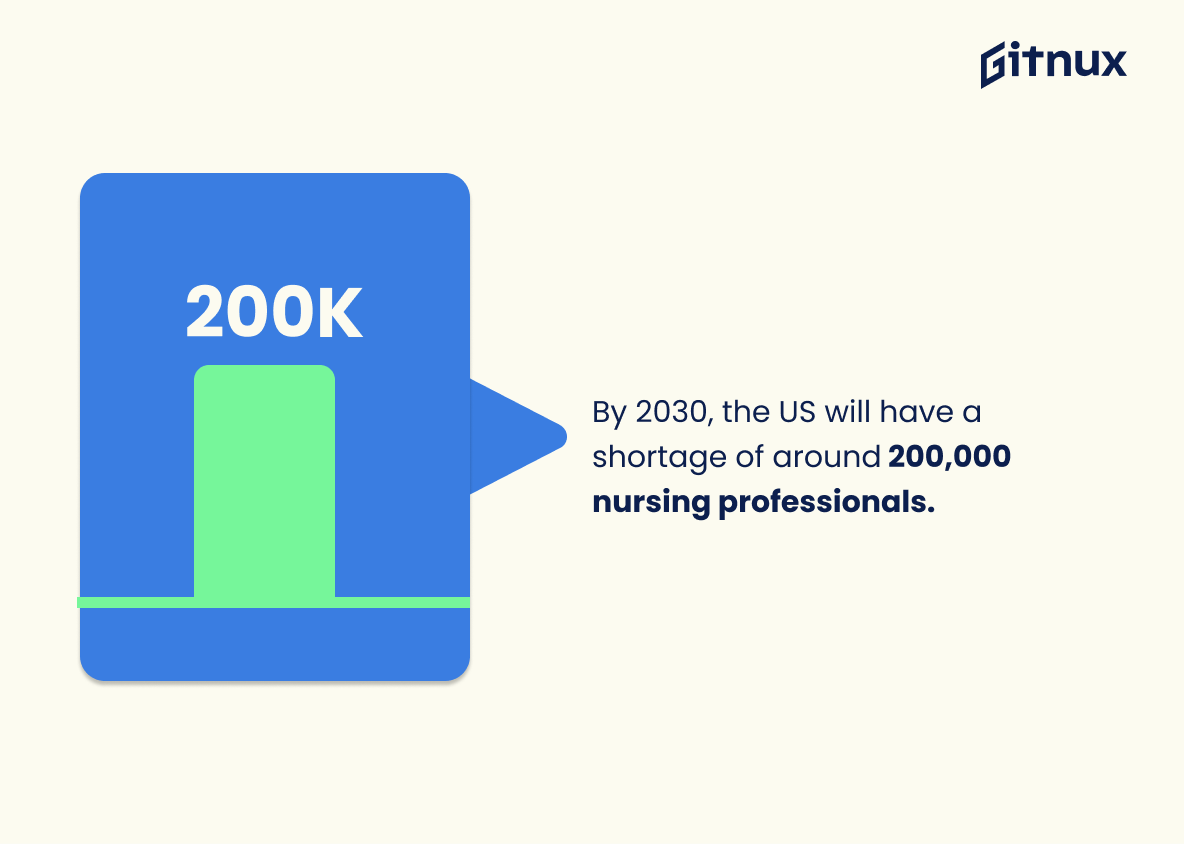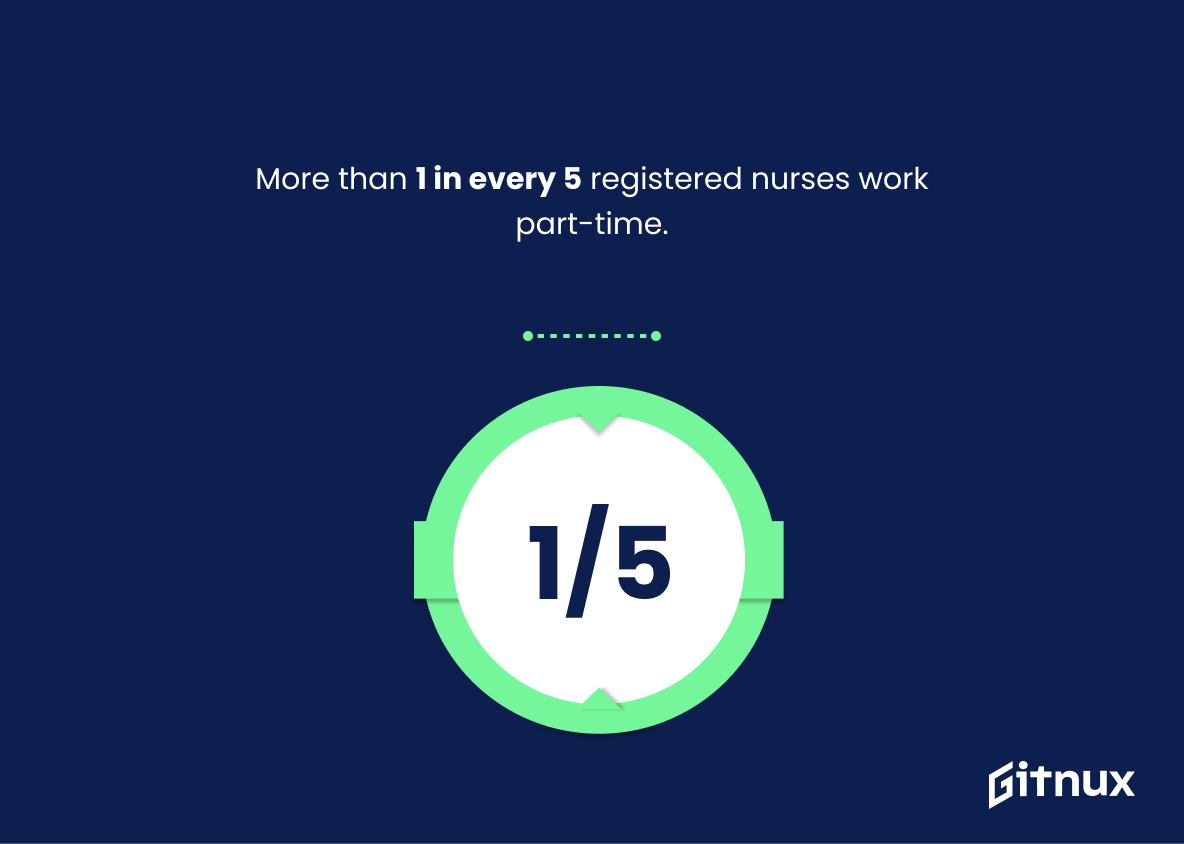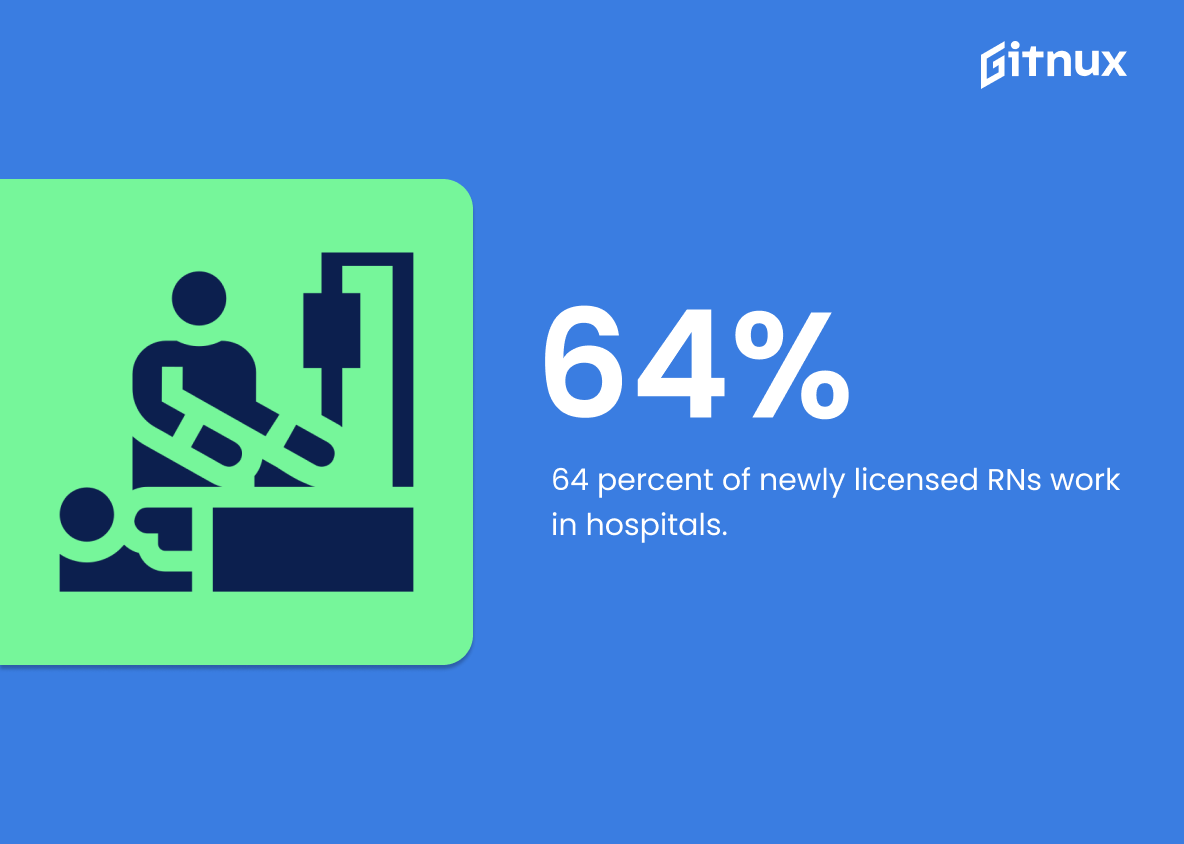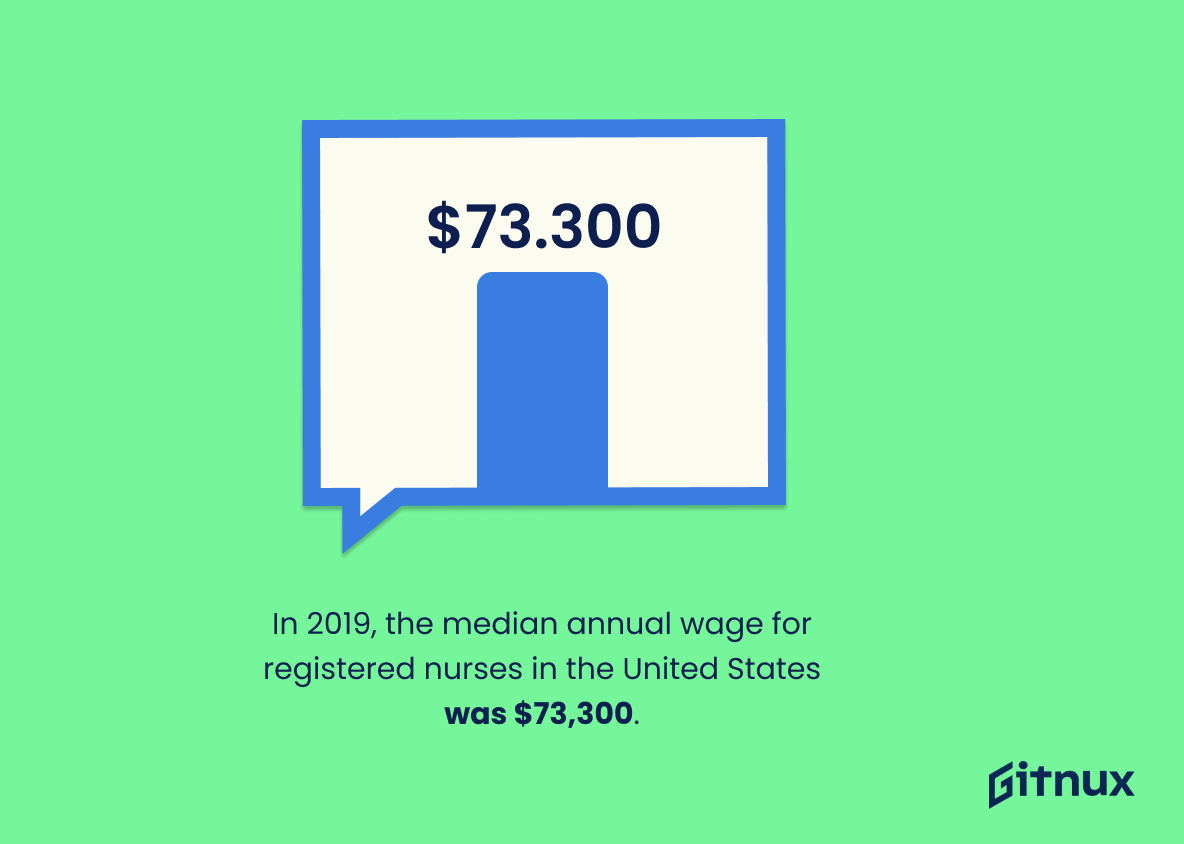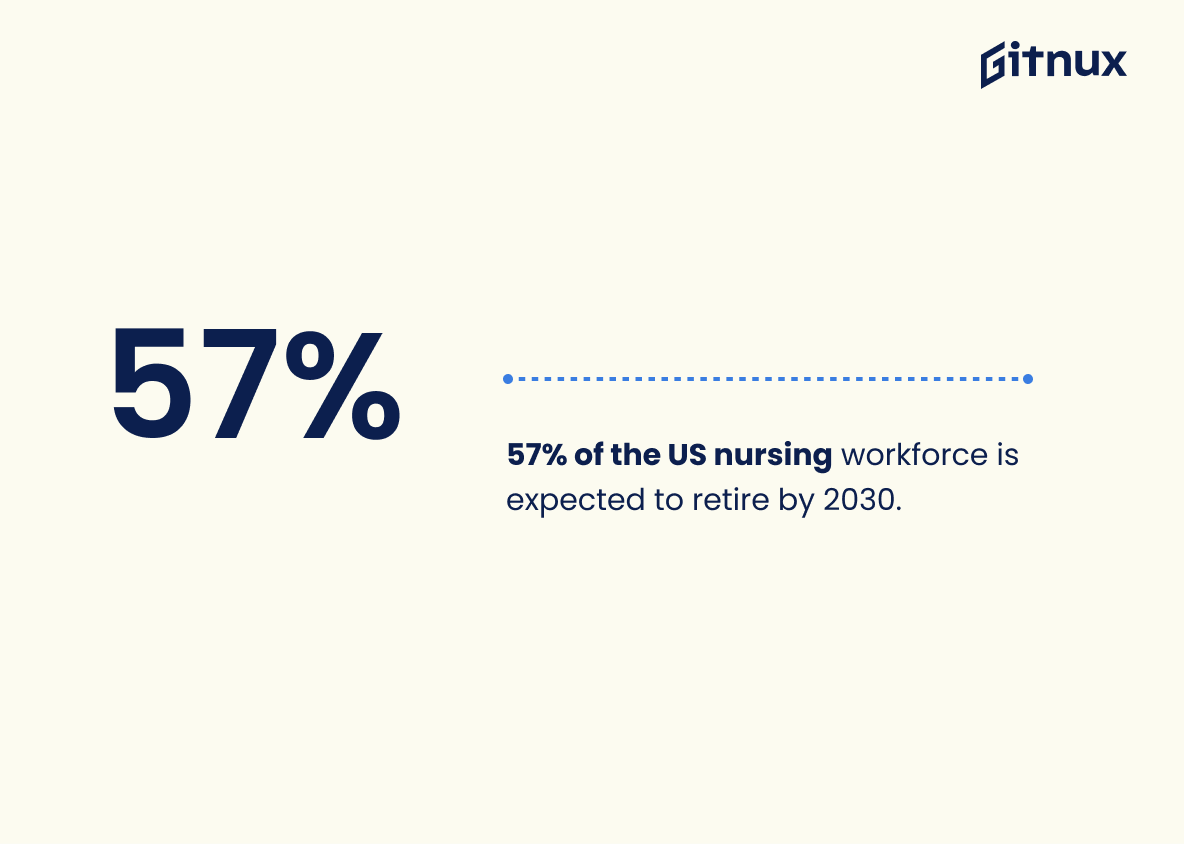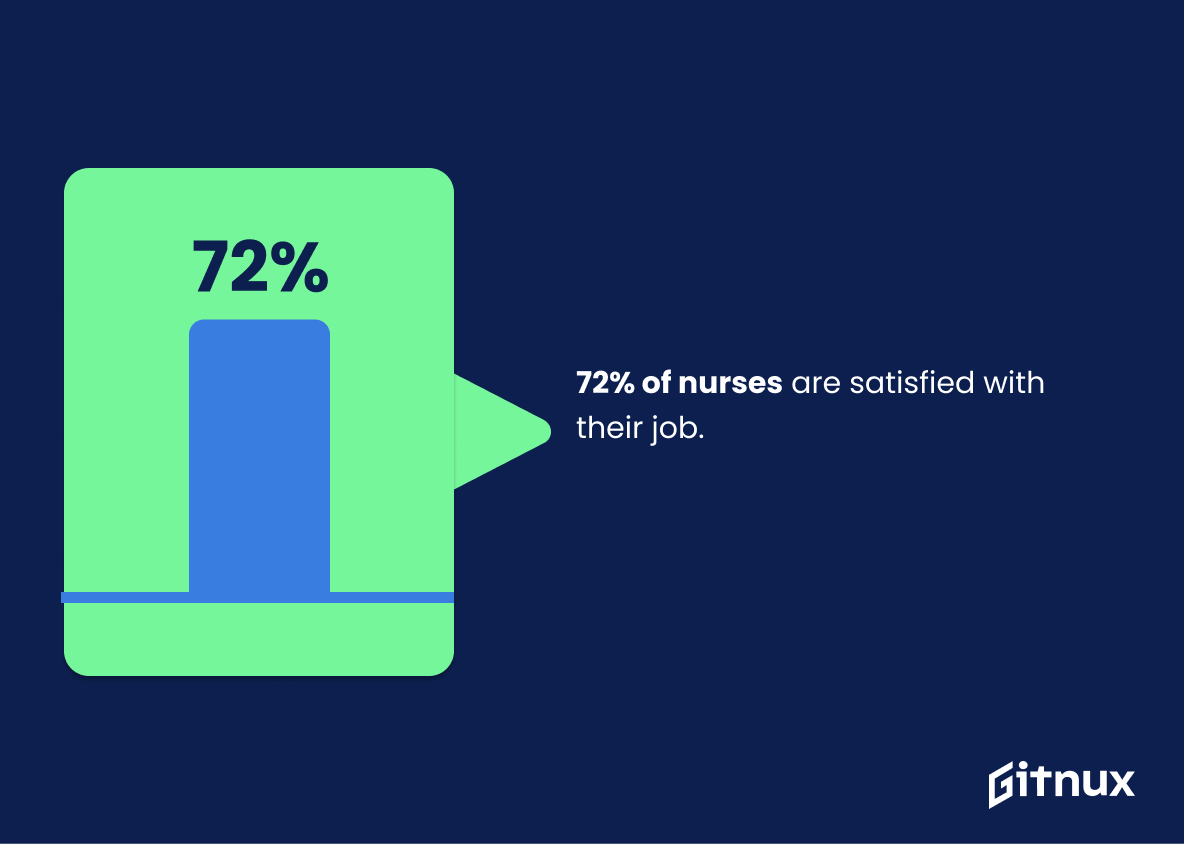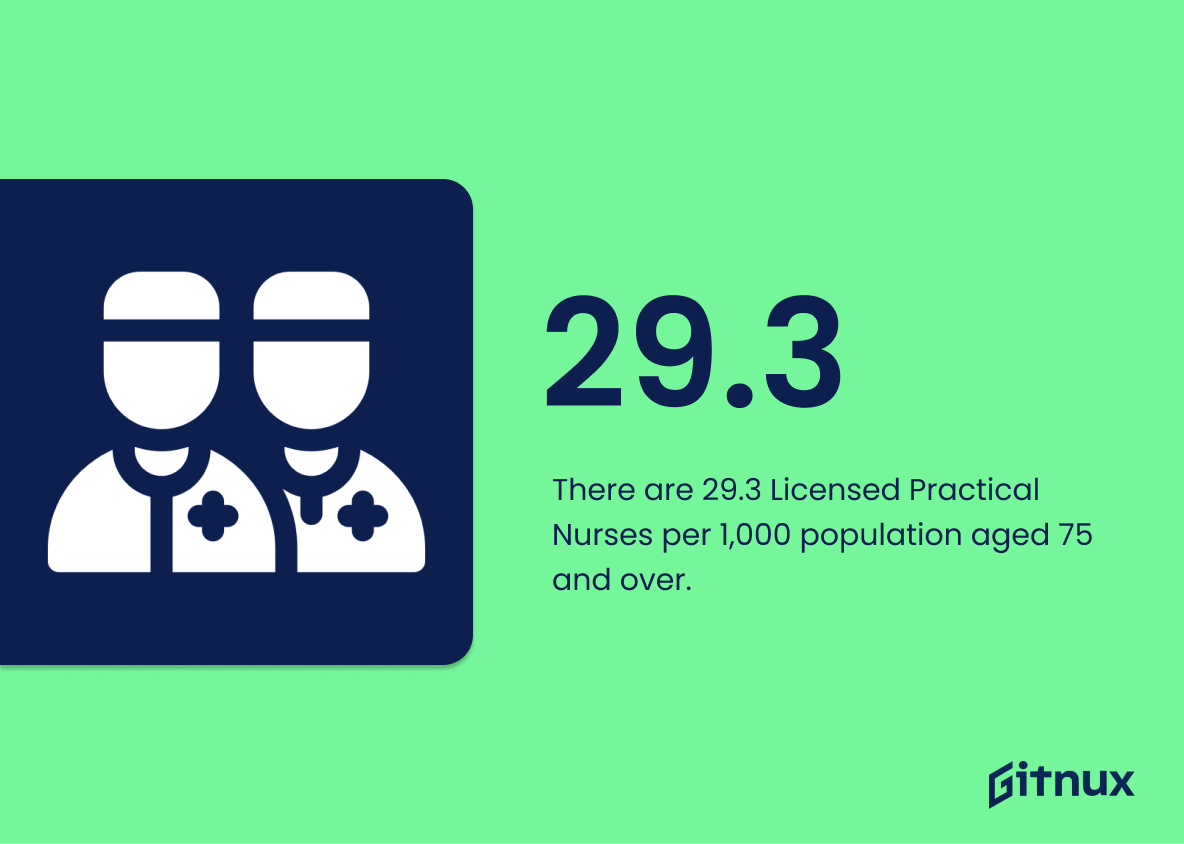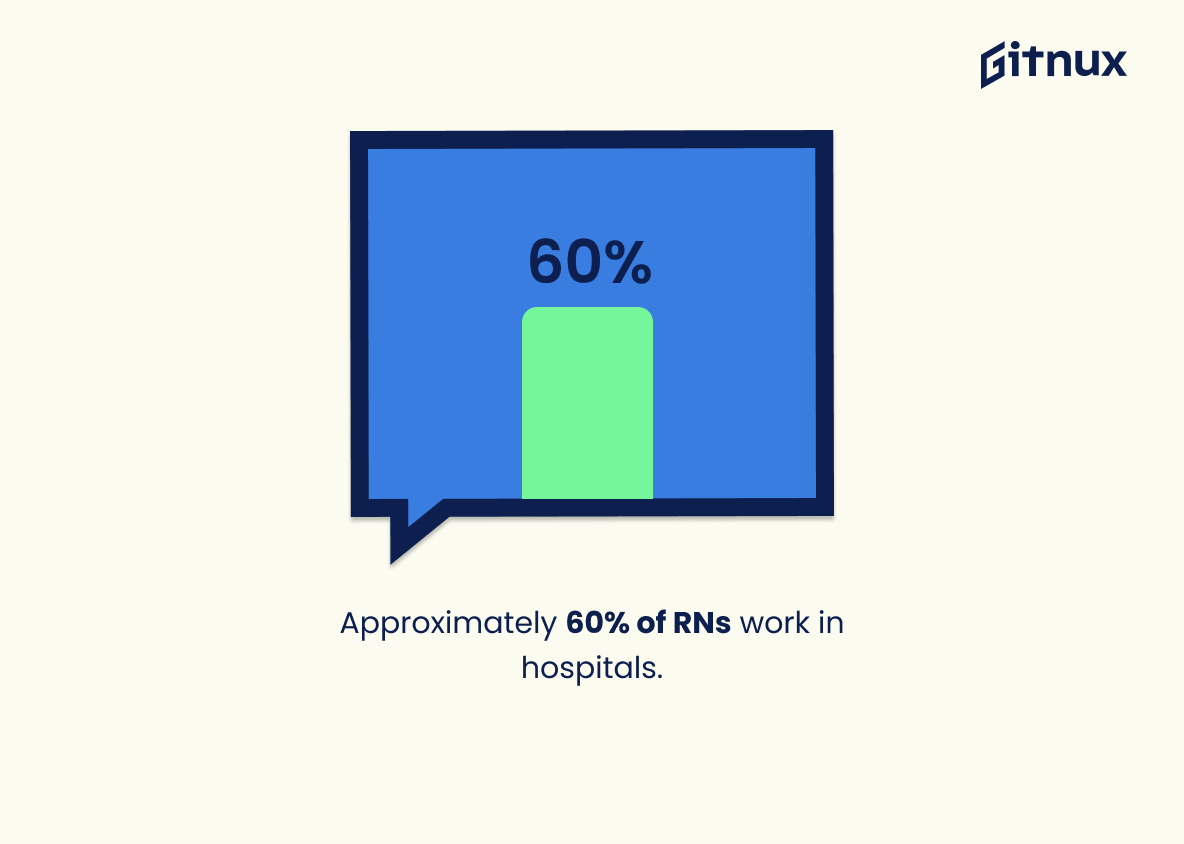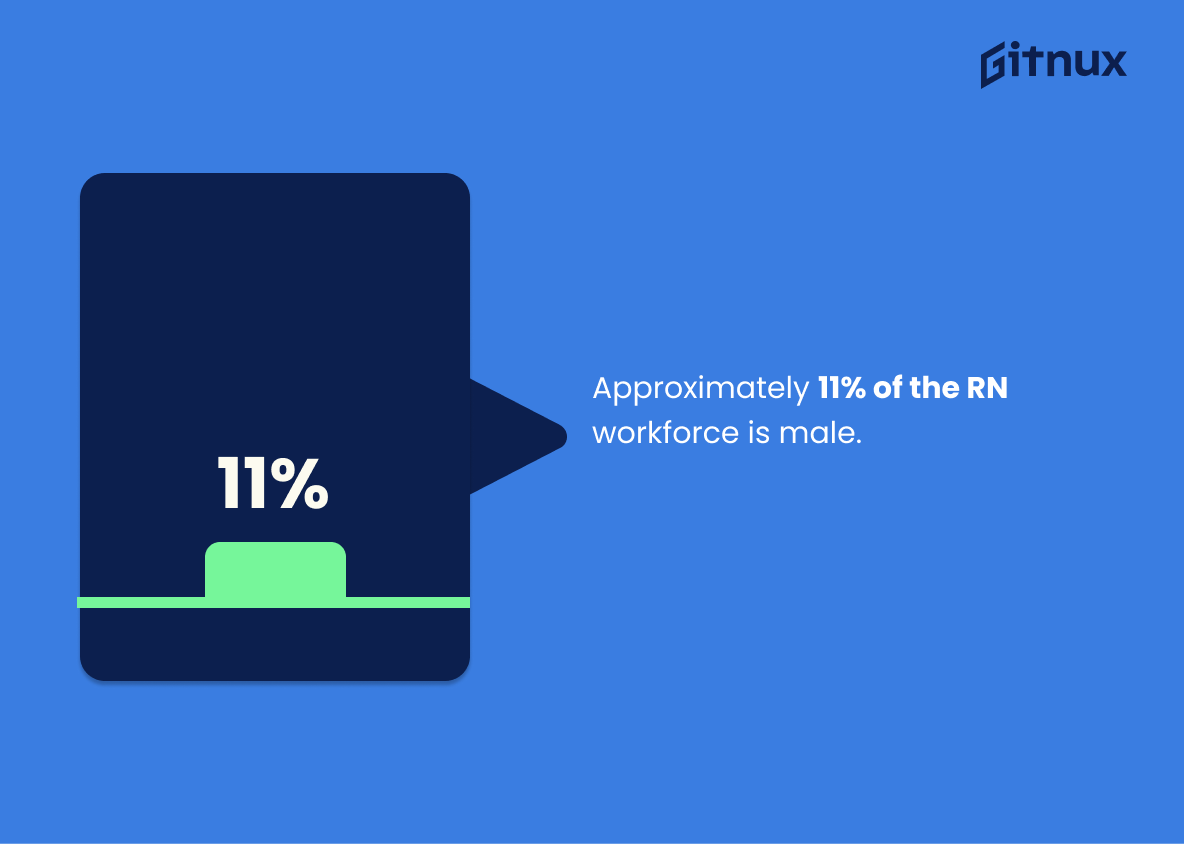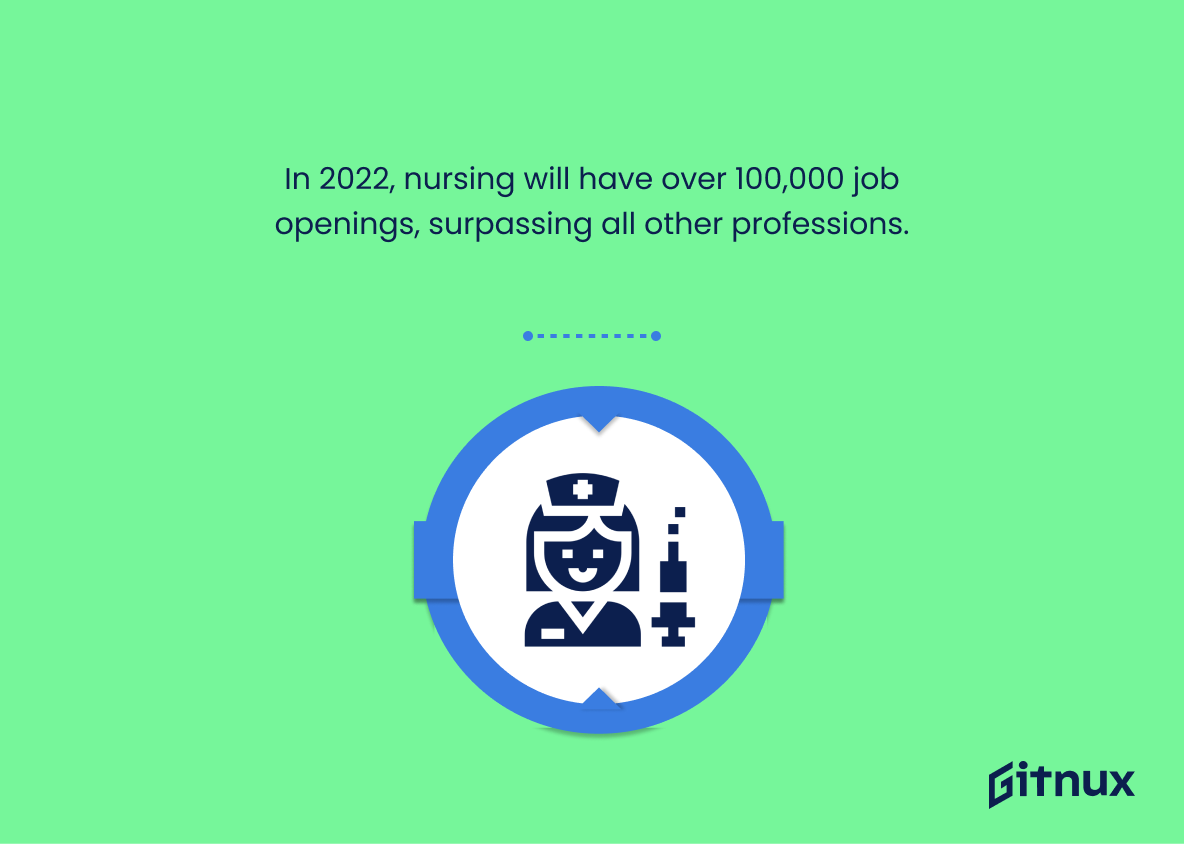Navigating the world of healthcare can feel like a journey through a maze, particularly when it comes to understanding the pivotal role of nursing professionals. As the backbone of any health system, the nursing workforce significantly impacts the success of healthcare delivery. In an attempt to shed light on this incredibly essential segment of the medical community, we delve into the realm of nursing workforce statistics. This blog post will provide a robust snapshot of the current scenario, exploring data trends, demographic shifts, and supply-demand dynamics that shape, shift, and refine the landscape of nursing worldwide. Get ready to uncover the figures and facts that influence today’s healthcare environment and the future of nursing.
The Latest Nursing Workforce Statistics Unveiled
In 2019, there were approximately 4.1 million licensed registered nurses (RNs) in the United States.
Shedding light on the impressive figure of 4.1 million licensed registered nurses (RNs) in the United States during 2019, provides a clear reflection of the robust fabric of the healthcare system. This figure not only indicates the strength of the nursing workforce but also spotlights the immense pool of compassionate individuals dedicated to patient care. In a blog entry about Nursing Workforce Statistics, this information builds an inspiring backdrop, serving as a key benchmark in understanding the magnitude and importance of nurses within our healthcare system. Any fluctuations or trends in this figure can steer the conversations towards nursing education, job demands, and potential policy interventions.
9 out of 10 registered nurses are female.
Painting a vivid picture of the nursing profession, the statistic ‘9 out of 10 registered nurses are female’ unveils a compelling narrative of gender predominance in nursing. It affirms nursing as a bastion for female employment and offers readers an essential gaze at the deep-rooted gender patterns in the healthcare field. An emphasis on this statistic further allows the exploration of underlying factors leading to this phenomenon, be it gender stereotypes, societal norms, or career decisions. Furthermore, it sets the stage for pressing dialogues – Are men underrepresented? Should there be more initiatives to balance the gender ratio? Indeed, weaving this illuminating statistic into a blog on Nursing Workforce Statistics not only adds depth to the narrative but also invites proactive crosstalk on gender dynamics in these crucial caregiving roles.
The average age of registered nurses (RNs) in the US is 51 years.
Illuminating the demographic makeup of the nursing workforce, the revelation that the average age of a registered nurse (RN) in the U.S. is 51 years sheds light on a significant sector within healthcare. This nugget of truth underscores an impending reality – a staggering wave of retirement on the horizon. With an increasing age of the nursing workforce, facilities and healthcare systems must confront the imminent shortage of nurses and prepare for the necessary transition and influx of new nursing professionals. Examining the impact of this statistic provides food for thought for policy makers, educators and healthcare organizations in forecasting the evolving landscape of healthcare services.
By 2030, the US will have a shortage of around 200,000 nursing professionals.
Delving into the projected landscape of the US nursing workforce, we hit upon a startling revelation. Forecasted to unfold by 2030 is a gaping deficit of about 200,000 nursing professionals. As if anticipatory sirens are blaring, this prediction highlights an impending crisis in the healthcare arena.
In the sphere of Nursing Workforce Statistics, this prediction doesn’t merely shed light, it practically spotlights a formidable challenge. It signifies potential strain on the quality of healthcare services, as the workload on the remaining nurses heightens. This warning serves as a catalyst for initiatives – those that can either ramp up the number of trained nurses or streamline processes to lessen their workload.
Moreover, this looming shortage of nursing professionals could also translate into career opportunities ripe for the plucking. For those considering delving into the noble profession, this statistic is akin to a clarion call, promising vast employment opportunities in the near future. Hence, while from one angle this statistic underscores a problem, from another, it unfolds a prospect.
In essence, this single statistic isn’t just a number, it’s a story; an unfolding narrative of an imminent healthcare challenge, a loud trumpet call for preemptive measures, and an encouraging forecast for budding nurses.
More than 1 in every 5 registered nurses work part-time.
Shining a spotlight on the figure that “More than 1 in every 5 registered nurses work part-time”, we unearth the flexible nature of employment within the nursing profession. This nugget of information provides an essential perspective on the work patterns within the nursing workforce, fueling debates and strategic discussions on staffing patterns, employee satisfaction, and patient care quality. Essentially, it offers a dimensional understanding of how nursing resources are allocated across healthcare facilities, enabling both policy creators, healthcare administrators and professionals delve into aspects of work-life balance in this significant career.
64 percent of newly licensed RNs work in hospitals.
Shedding light on the statistic, ’64 percent of newly licensed RNs work in hospitals,’ serves as a pivotal compass in navigating the landscape of nursing workforce statistics. In the universe of nursing careers, this data point illuminates the predominant gravitational pull of hospitals as the primary work setting for new RNs. This prevalence underscores the high demand for skilled nursing care in such institutions, shedding light on the broader health ecosystem’s trends and needs. Thus, it paints a telling picture of the current nursing workforce distribution, offering invaluable insight to policymakers, hospital administrators, nursing educators and prospective nurses.
In 2019, the median annual wage for registered nurses in the United States was $73,300.
Exploring the substantially significant wage of $73,300 as the median annual income for registered nurses in the United States in 2019 adds a noteworthy dimension to any discussion on Nursing Workforce Statistics. First, it authoritatively reflects the monetary value placed on this profession, alluding to its importance in the health care sector. Second, it serves as an enticing magnet for potential entrants into the nursing field, presenting a clear financial image of the rewards associated with such a career. Moreover, viewing this figure in the light of past and future trends can expose underlying economic dynamics. Thus, enveloped in this figure is a powerful narrative pertinent to both economics and nursing workforce trends.
57% of the US nursing workforce is expected to retire by 2030.
Painting a striking portrait of the future, the statistic that anticipates a staggering 57% of the U.S nursing workforce retiring by 2030, hints at a dire healthcare landscape ahead. This revelation comes as a crucial piece of the puzzle, spotlighting the impending drastic shift in nursing demographics. The potential implications stretch far and wide; a likely nursing shortage could take center stage, exacerbating caregiver demand, patient care quality and public health. Detangling such nuances within this staggering percentage can help strategize more effectively, thus underlining the indispensability of workforce planning in nursing.
72% of nurses are satisfied with their job.
Holding the lantern to the morale and job satisfaction within the nursing workforce, the sterling fact that 72% of nurses find their job fulfilling plays a pivotal role. It punctuates the narrative with a testament to the resilience and satisfaction of these crucial healthcare individuals despite the demanding nature of their field. It’s like the soft clay that moulds public perception, crafting admiration for the steadfast commitment nurses demonstrate towards their profession. The figure also sets a benchmark for healthcare organizations to gauge the success of their workforce policies and strive for improvement, chasing after the ideal 100%. It’s the chainmail, protecting the reputation of the nursing industry, rebuffing the blade-edge of criticism that might suggest widespread dissatisfaction. This figure is not just a statistic, it’s a heartbeat, echoing the unified contentment of nurses across the nation.
Minority nurses represent 19.2% of the total RN population.
Delving into the richness of diversity within the nursing sector, we highlight a noteworthy figure: minority nurses constitute 19.2% of the total registered nurse (RN) population. This proportion is not merely a number, but a vibrant storyline showcasing progress, while hinting towards an area craving greater focus. This narrative underlies the critical idea in our blog post about Nursing Workforce Statistics: broader representation in nursing can lead to culturally proficient care, bridging the chasm between healthcare providers and multicultural patient populations. It’s a rallying statistic, inviting us to celebrate the strides taken towards inclusivity and diversity whilst instigating us to push harder for comprehensive representation in our nursing workforce.
There are 29.3 Licensed Practical Nurses per 1,000 population aged 75 and over.
Delving into the engaging world of nursing workforce statistics, one may stumble upon an eye-opening fact – a ratio of approximately 29.3 Licensed Practical Nurses for every 1,000 individuals aged 75 and over. This number serves as a compelling bridge of data linking the necessity of nursing care to the burgeoning needs of the elderly population. In the realm of healthcare, where resources should strategically align with demographics, it charts a roadmap for preparedness against imminent challenges of an aging society. Furthermore, this metric unravels the interlacing threads of supply and demand in the nursing field, offering relevant insights for workforce planning and policy-making to improve patient outcomes. Therefore, it’s pivotal in maintaining the right balance in the healthcare ecosystem, as it directly impacts patient care quality, accessibility of services, and the well-being of our beloved senior citizens.
Approximately 60% of RNs work in hospitals.
Peeling back the layers of the Nursing Workforce Statistics, one finds an intriguing truth – Roughly 60% of Registered Nurses (RNs) are stationed in hospitals. This nugget of information is paramount to our understanding. It illuminates a significant concentration of RNs in hospital settings, underscoring their pivotal role in patient care and recovery. In this respect, hospitals become central hubs in the nursing landscape, offering a vast expanse of experiences and challenges. This percentage also hints at the potential pressure and demands faced by these healthcare warriors on the front lines, shaping the more comprehensive discussion on workforce distribution, workload management, and possible improvements in the industry.
62% of full-time nurses work 40 hours or more per week.
In the terrain of Nursing Workforce Statistics, one cannot overlook the profound revelation that 62% of full-time nurses are dedicatedly clocking 40 hours or more on the duty rosters weekly. This potent figure not only mirrors the dedication and commitment of these healthcare warriors, but it also sketches a graphic blueprint of the evolving dynamics of the healthcare scenario. The statistic highlights a potent picture of today’s nursing industry wherein long working hours have become an occupational characteristics. It is a subtle reminder that understanding and addressing nurse workload and overtime is essential to ensure the wellbeing of our nursing workforce, and thus, the overall quality of patient care they deliver.
Approximately 11% of the RN workforce is male.
Peering into the gender distribution within the nursing workforce, an intriguing facet emerges – barely more than one in ten registered nurses are males. This data-weighted revelation nudges us to scrutinize the longstanding stereotype of nursing as a predominantly female oriented profession. As the entire healthcare system continues to diversify and evolve, such statistics demand our attention, posing a silent challenge to traditional nursing demographics. The engagement of more males in the nursing profession could potentially cast ripples across the nursing landscape, influencing both the quality of patient care and the dynamics of the healthcare team. Additionally, the underrepresentation of men in nursing offers a fertile ground to explore the potential reasons and effects, as well as the ways to usher in a more diverse, balanced workforce.
By 2022, there will be far more registered nurse jobs available than any other profession, at more than 100,000 per year.
In the vein of illuminating revelations, the projection of over 100,000 annual nursing jobs opening up by 2022 underscores an expansive growth in the nursing field, outpacing all other professions. In the cosmos of Nursing Workforce Statistics, this information holds profound significance. It heralds a promising horizon for aspiring nurses, tempting them with vibrant career opportunities and job security ahead. Moreover, it unveils the role of nursing in shaping our healthcare future, reflecting its accelerating demand in the face of an aging population and changing health policies. Finally, for policy makers and educators, it offers an eye-opening quantification of the imminent talent chasm that needs urgent bridging through effective planning, educational initiatives and attractive employment packages.
According to the World Health Statistics 2020, there are approximately 28.1 million nurses worldwide.
Unraveling the aforementioned World Health Statistics data reveals a staggering figure of 28.1 million nurses globally, injecting an intense level of significance into our conversation about nursing workforce statistics. This titan number underscores the pulsating heart of our healthcare system – our nurses. Putting this in the center stage, it serves as a yardstick to gauge the extensive network of healthcare providers that stretch across our planet, revealing the scope and magnitude of services they undertake daily.
Moreover, recognizing the significance of this number allows us to magnify the encouraging reality wherein this indispensable sector continues to flourish. Conversely, it also poses thrilling challenges regarding managing and sustaining this voluminous group of professionals.
Therefore, immersing ourselves in a dialogue about such grand numbers, we can explore patterns, discern inequalities, strategize solutions, and measure progress in global health care from the nursing perspective in a much more nuanced manner. We tease apart the roles nurses play, the challenges they endure, and the impact they make – all critical to understanding and enhancing the healthcare tapestry woven tightly by the world’s 28.1 million nurses.
As of 2019, there are approximately 3.8 million registered nurses in the US.
Painting a picture of the dynamic landscape of the nursing profession, the statistic underscores the significant presence of approximately 3.8 million registered nurses in the US, as of 2019. This figure serves as a testament to the substantial role that nurses play in the healthcare continuum, charting the undeniable growth and evolution of the profession over the years. Nestled amid the realm of Nursing Workforce Statistics, this data point carves out the current magnitude of the nursing workforce, culminating in a comprehensive analysis when juxtaposed with other relevant metrics.
The U.S. will need to produce 1.1 million new RNs by 2022 to fill newly created jobs and replace a large segment of the nursing workforce expected to retire soon.
Painting a compelling portrait of the future of nursing in the U.S., this statistic thrusts us into the heart of an emerging reality: the race against time to fill the potential nursing void by 2022. Amid the labyrinth of nursing workforce numbers, this statistical insight stands as a robust pillar signaling the demand for an additional 1.1 million RNs. The purpose isn’t merely to populate newly established positions but also to replenish a consequential segment on the verge of retirement. This dual-necessity elegantly underscores the urgency and significance of refining strategies for recruitment, education, and retention in the nursing field, laying the foundation for a sturdy healthcare system ready to face tomorrow’s challenges.
Up to 80% of nurses report moderate to high levels of stress related to their job.
Peeling back the common perception of nursing into its underlying truths, it appears that a significant portion, up to 80%, of our nursing heroes are grappling with moderate to high levels of work-related stress.
In the colorful tableau of Nursing Workforce Statistics, this is one hue that demands our attention. It throws a spotlight on an often undisclosed facet of the nursing profession – the mental and emotional toll it can have on individuals. High stress levels, when sustained over a period of time, can have profound implications for nurses in terms of their well-being, job satisfaction and patient care.
Moreover, in the grand scale of workforce planning and policy development, it’s a chilling reminder of the importance of proactively addressing work environment and emotional support systems. After all, a vibrant, stress-resilient nursing workforce is integral to the health of our healthcare system. Furthermore, acknowledging this stress factor can contribute to optimization of healthcare delivery, nurse retention rates, and the overall longevity of a nursing career.
In the final analysis, this number is not just a statistic – it’s a wake-up call to redefine nursing strategies and policies to ensure a more robust, stress-managed nursing workforce.
Conclusion
Keeping a vigilant eye on nursing workforce statistics is vital not only for healthcare institutions but also public health strategies. These figures offer valuable insights into the overall health landscape while highlighting the areas which need greater support and investment. Observing trends helps inform the recruitment efforts, aids in workforce planning and management, and ultimately enhances patient care. As the demand for nursing professionals continues to rise, we must adopt proactive ways to attract and retain vital nursing staff. The nursing profession is undeniably challenging yet rewarding. Together, we can boost the profession by ensuring adequate staffing, offering rewarding opportunities for career growth, and creating a supportive work environment that upholds the wellbeing of every nurse.
References
0. – https://www.www.aacnnursing.org
1. – https://www.data.hrsa.gov
2. – https://www.www.beckershospitalreview.com
3. – https://www.www.ncbi.nlm.nih.gov
4. – https://www.www.bls.gov
5. – https://www.journals.lww.com
6. – https://www.nurse.org
7. – https://www.www.who.int
8. – https://www.minoritynurse.com
9. – https://www.www.cdc.gov
10. – https://www.www.nursingworld.org
11. – https://www.www.amnhealthcare.com
